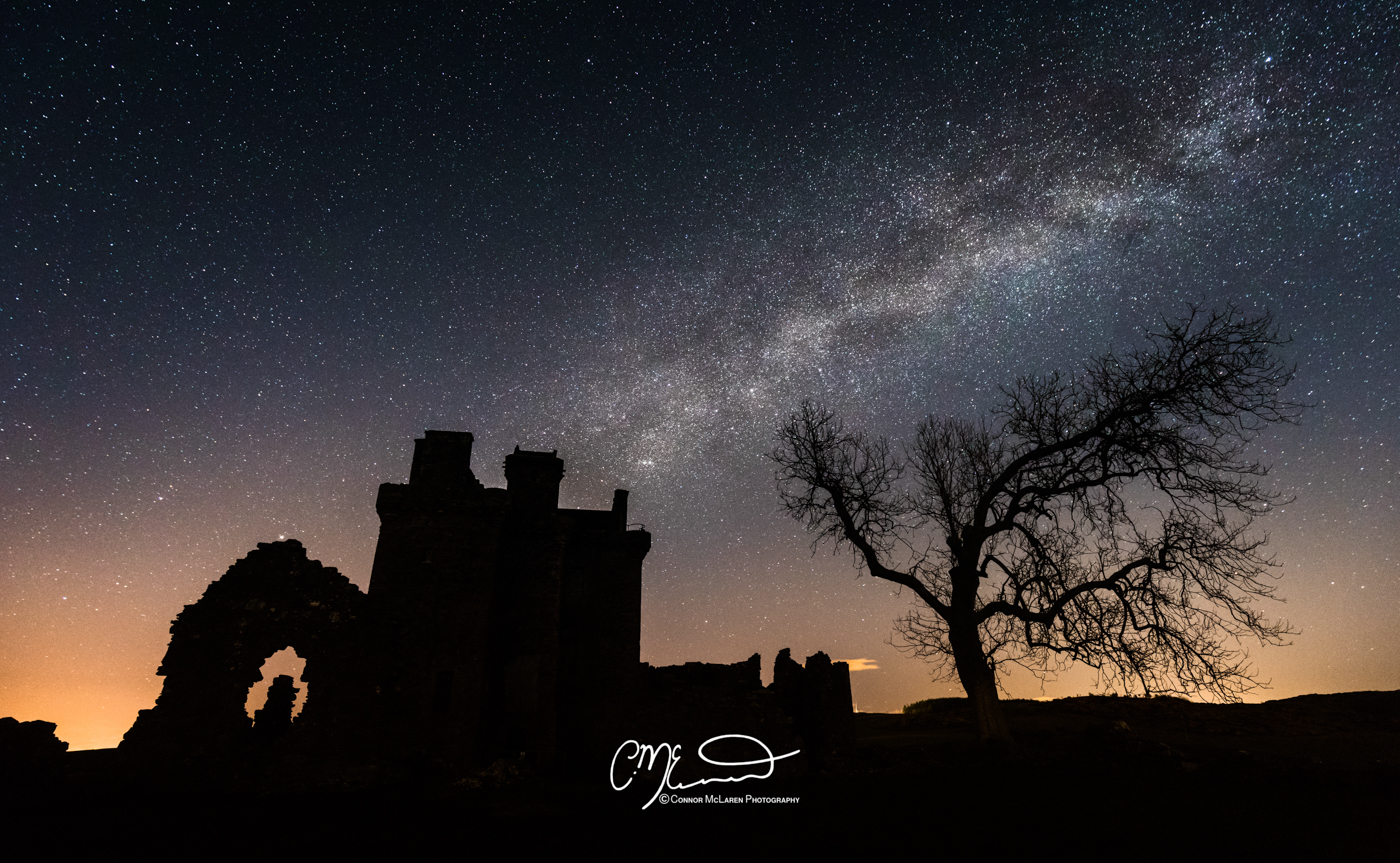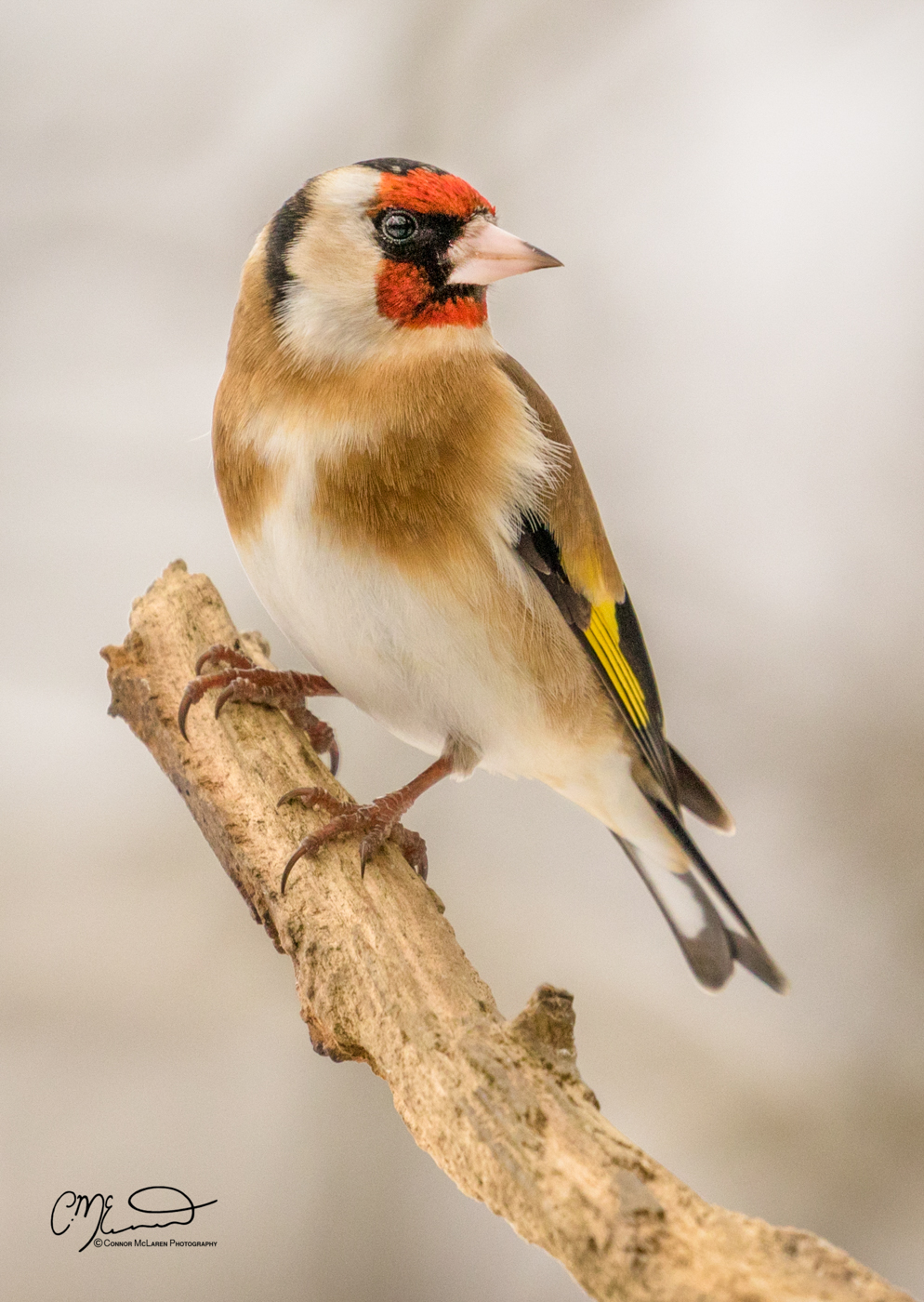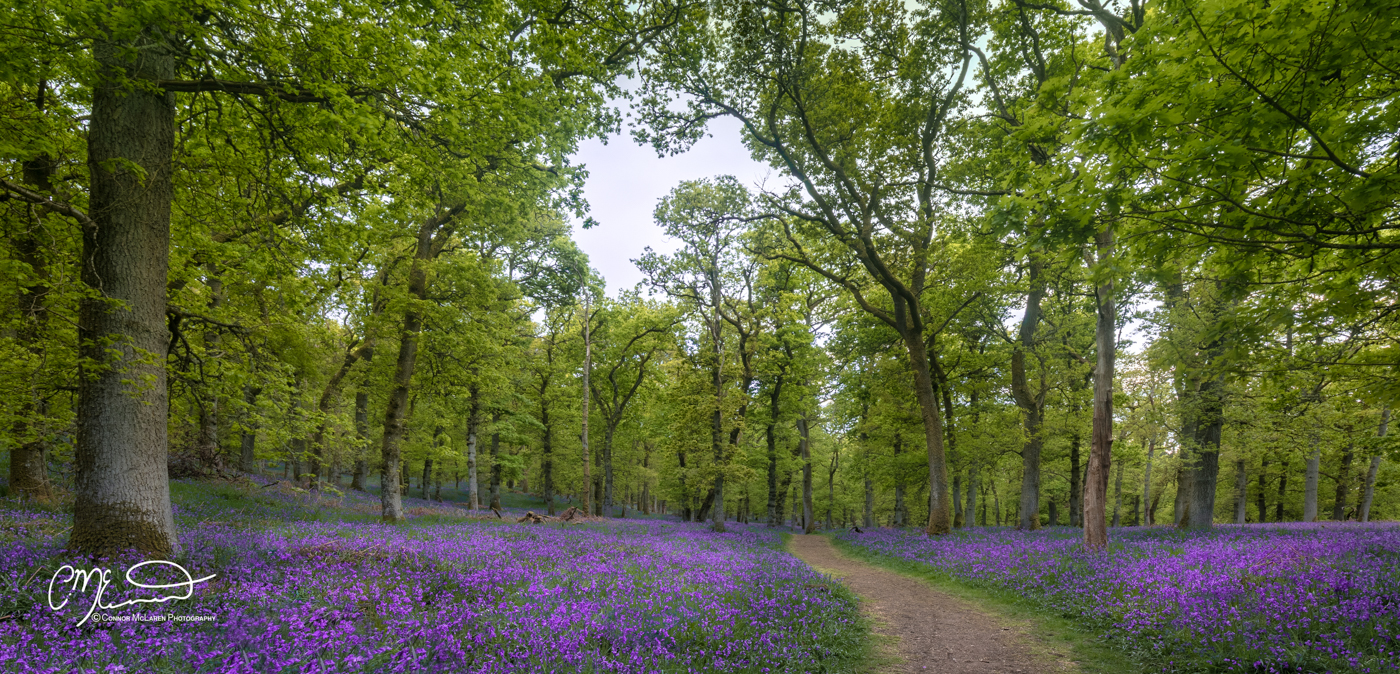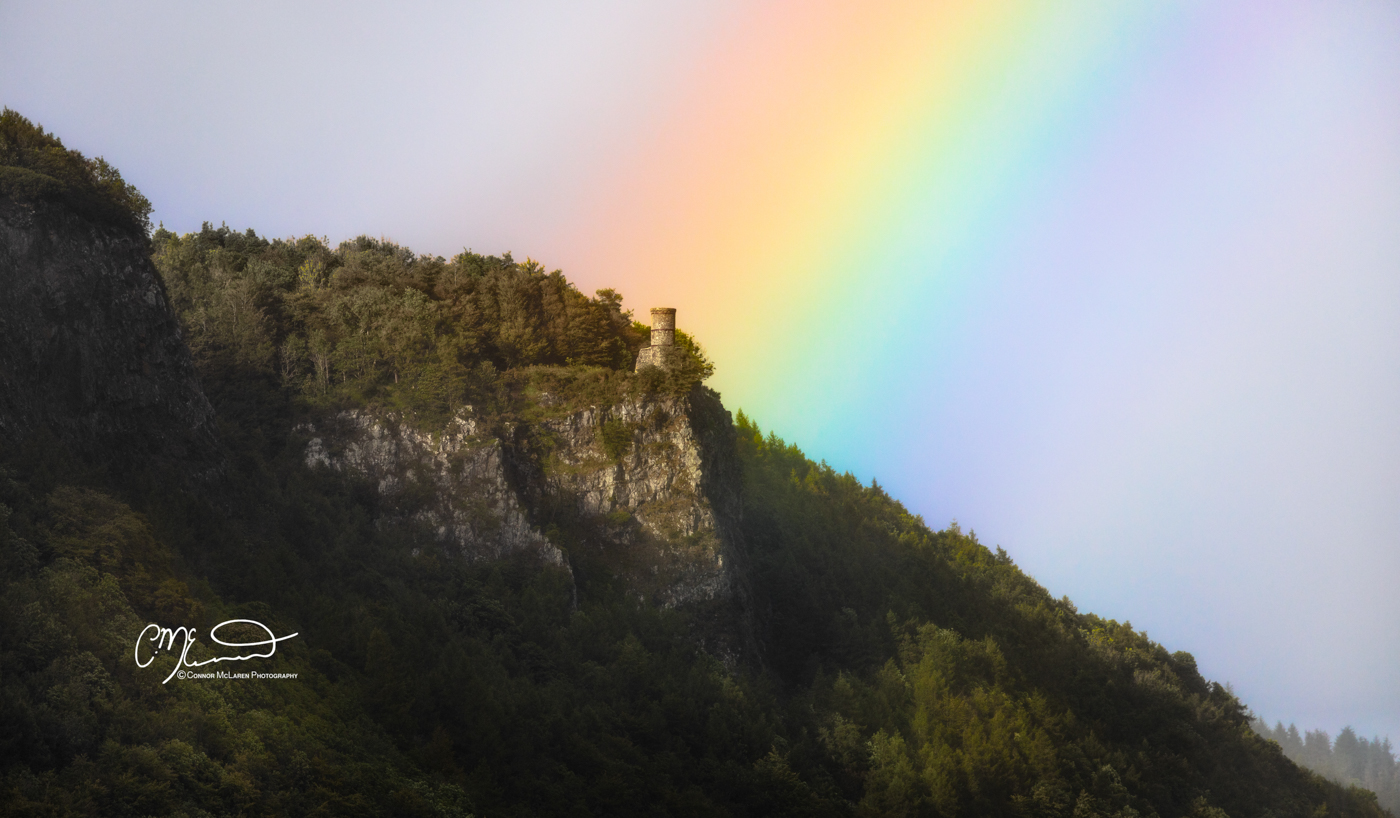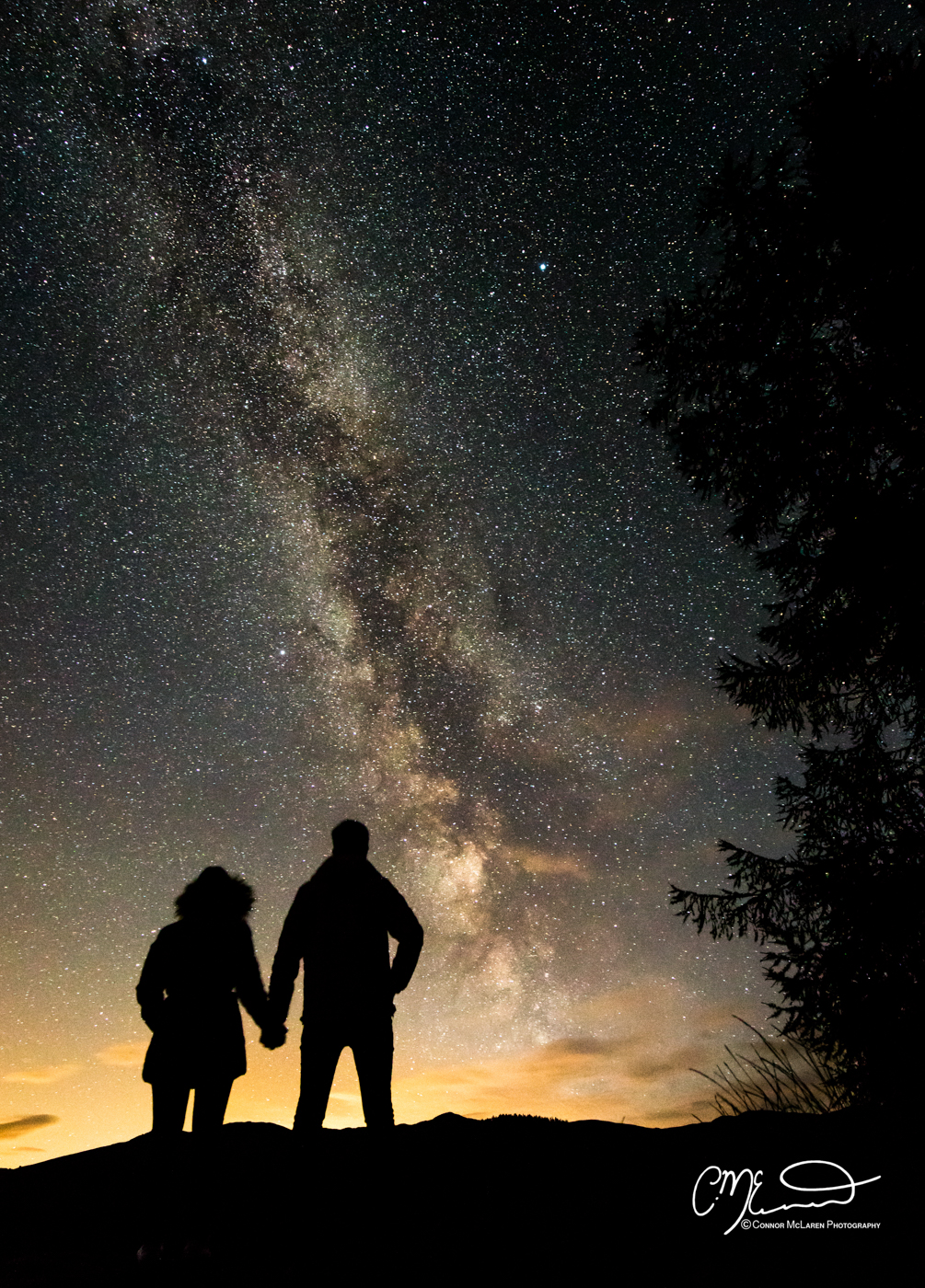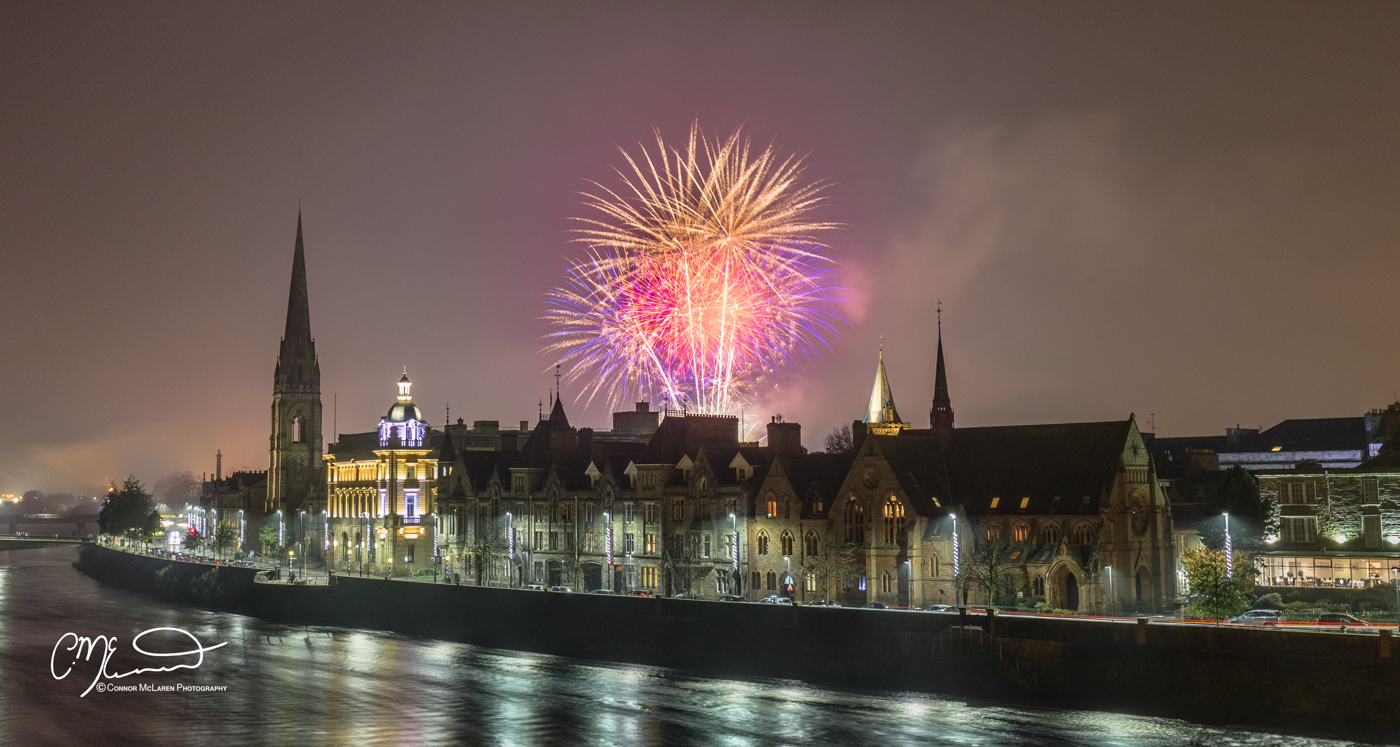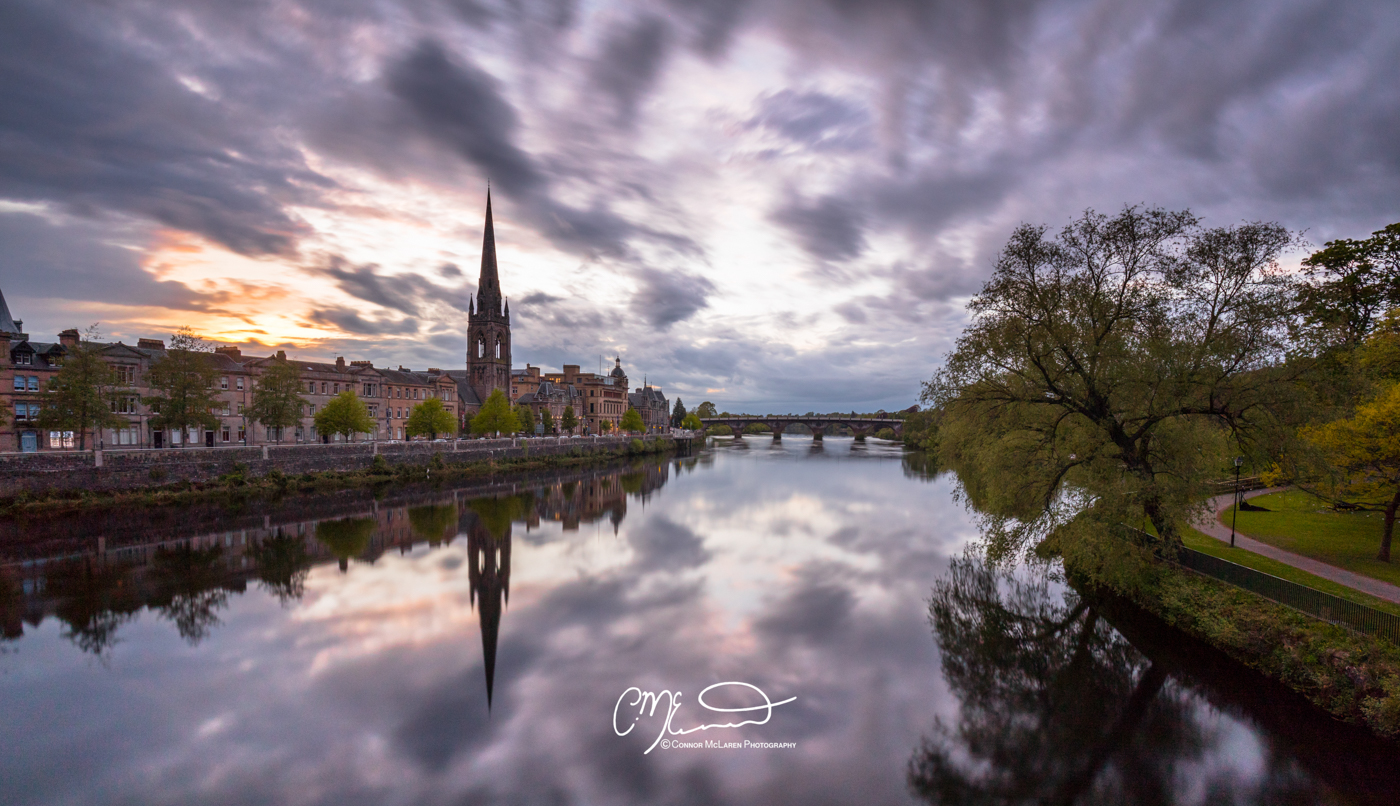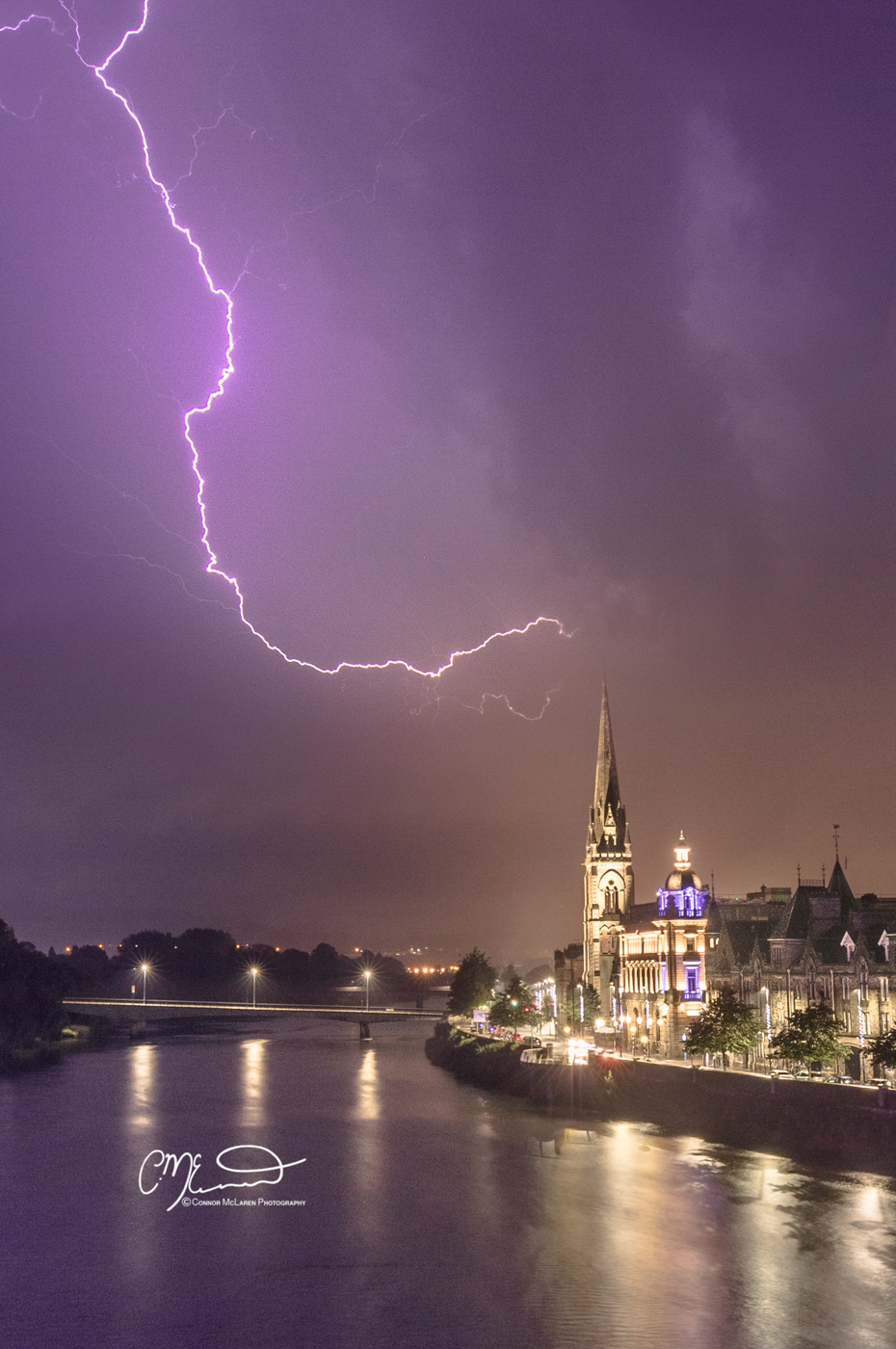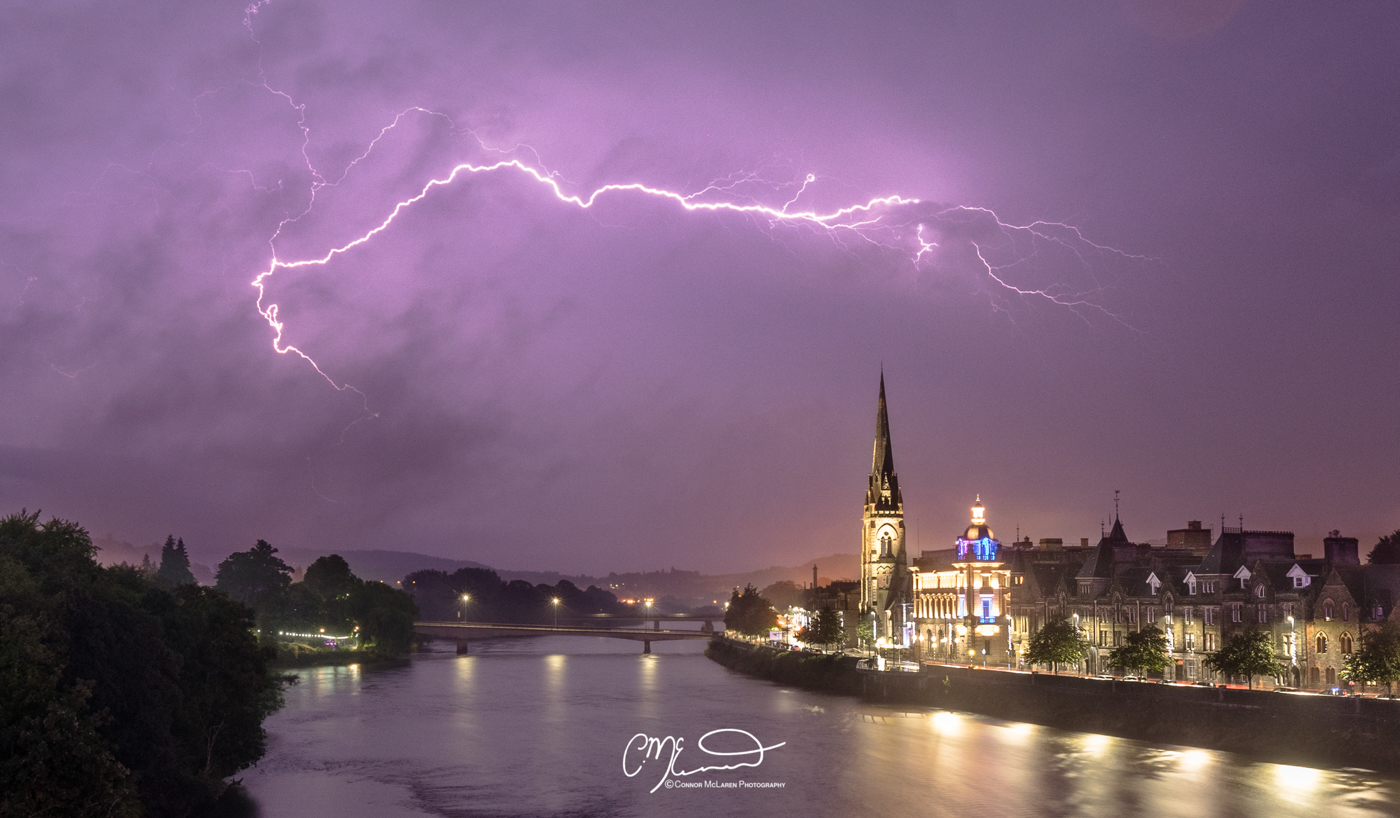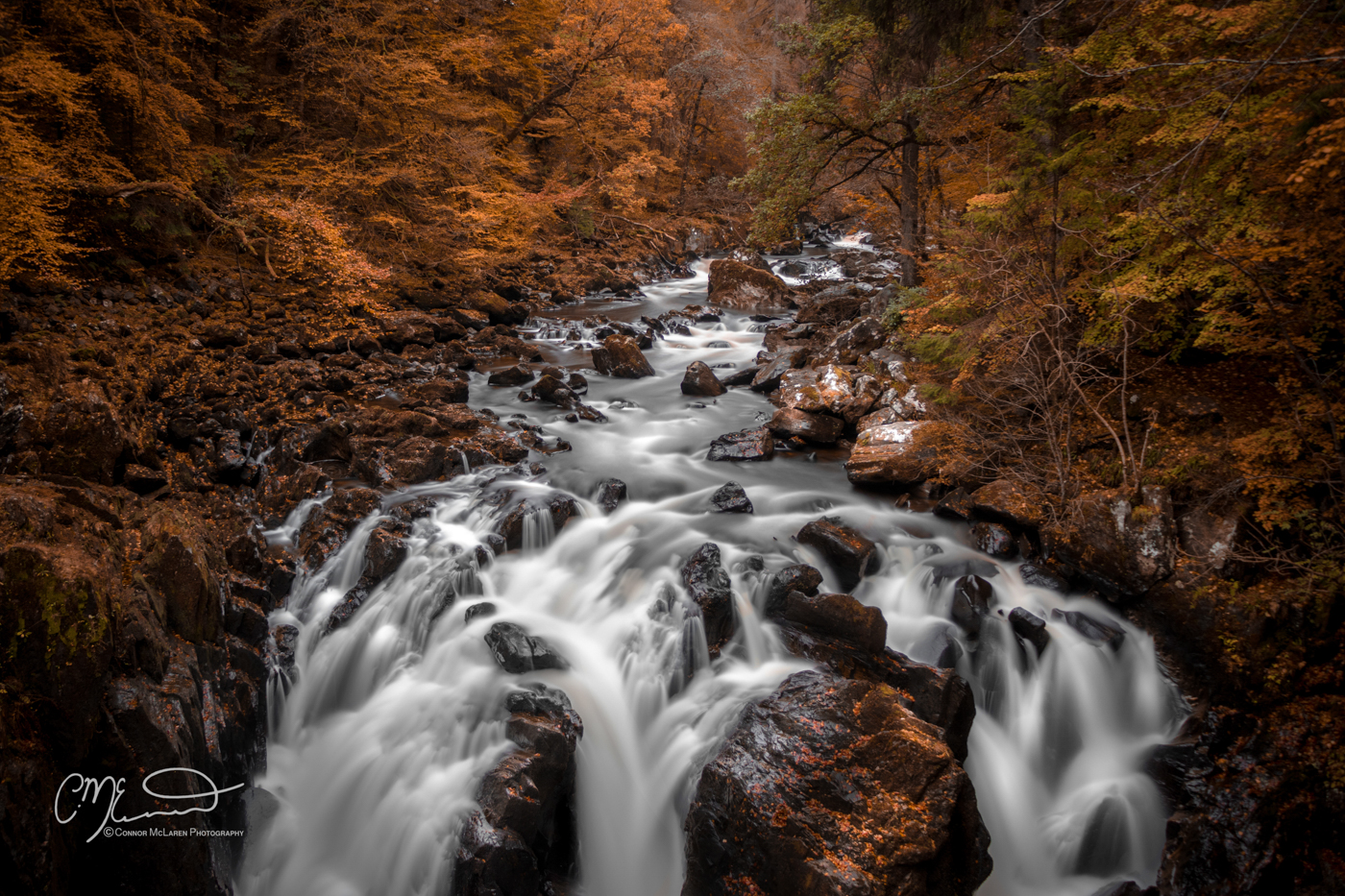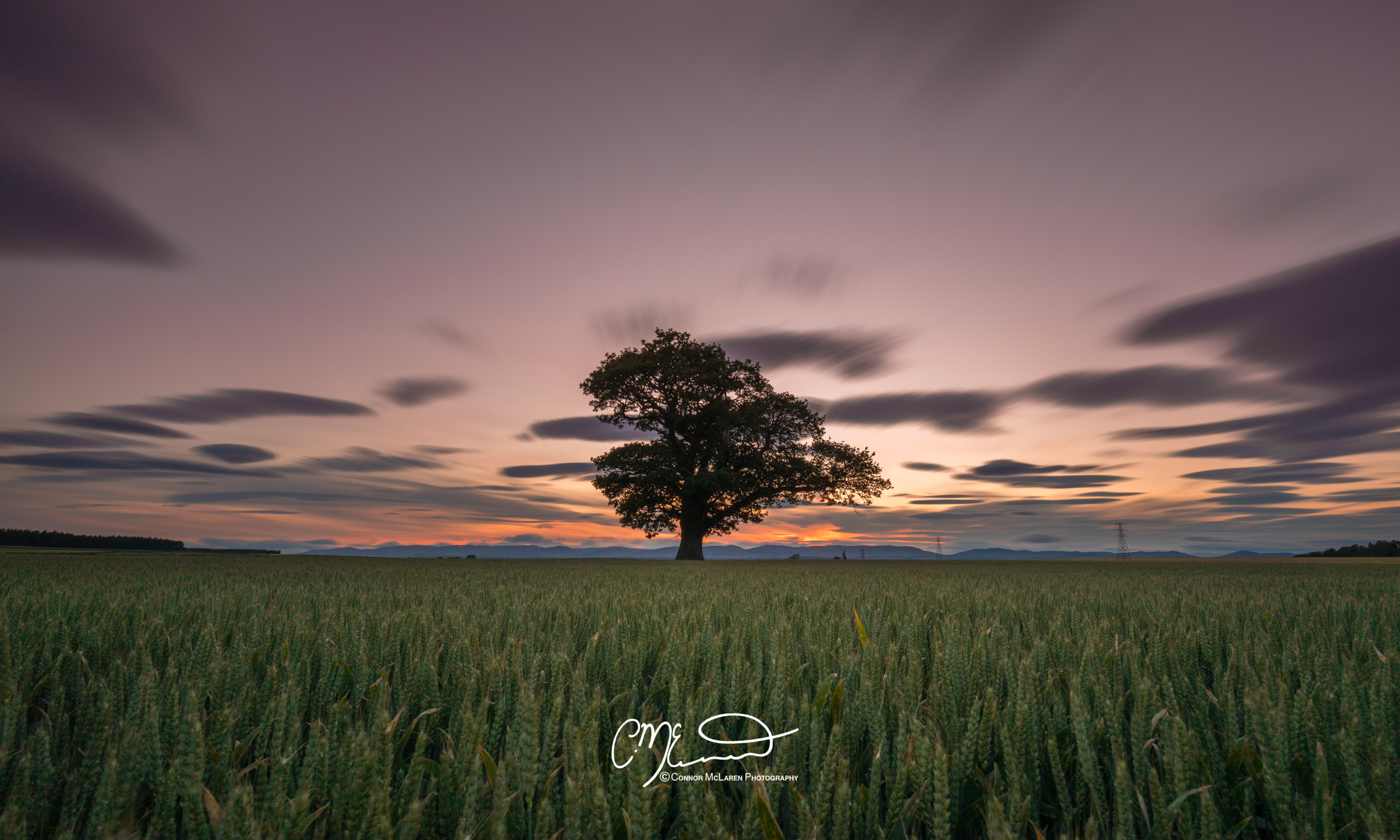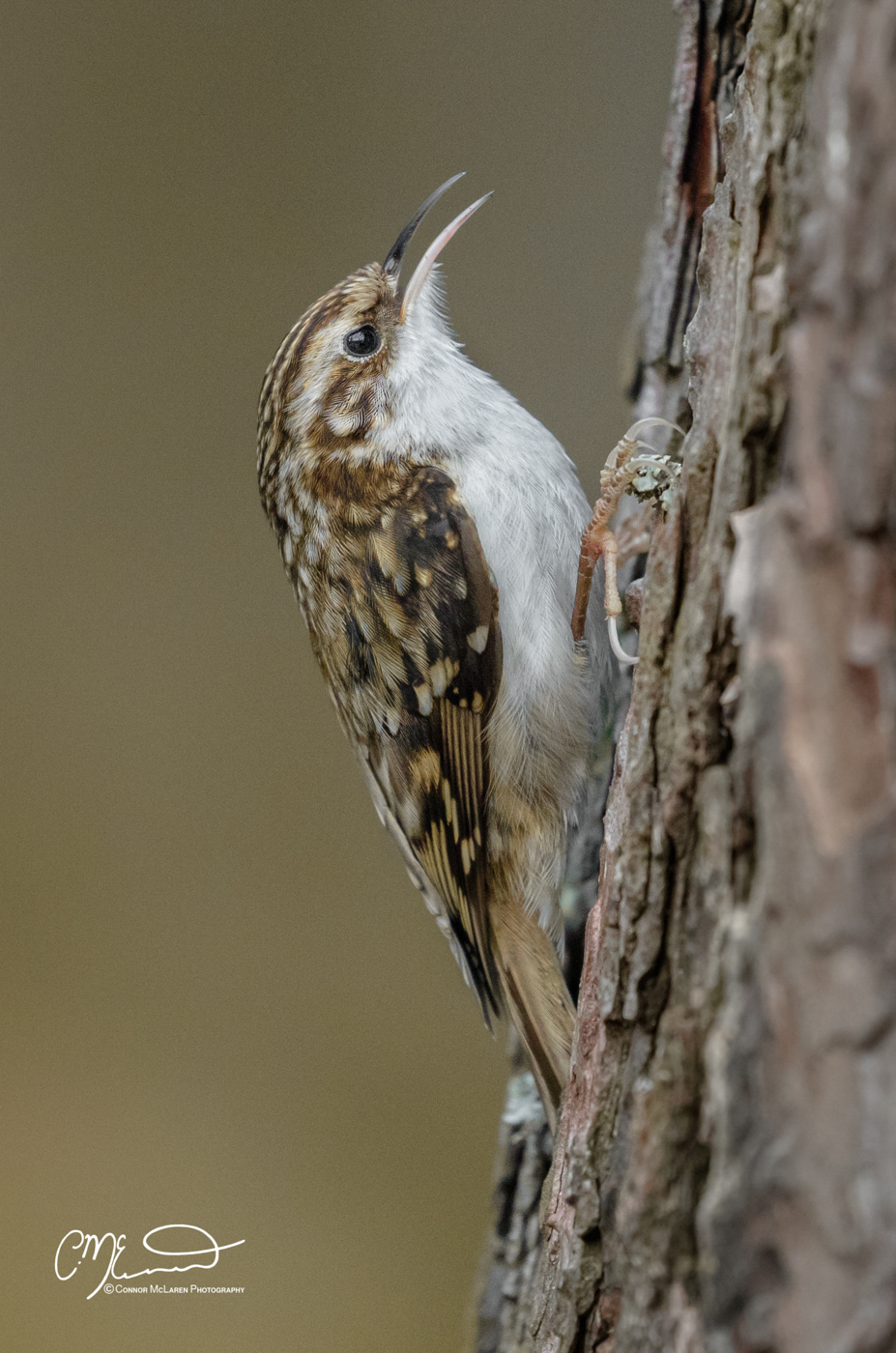The story of Perth and the Tay are inextricably interwoven, partly because of this, Perth is a place which has still managed to retain a very obvious connection with nature. As our lives generally become more and more rapid and separated from the natural world we are part of, Perth has a refreshing habit of reminding you of the bigger picture, something that is both humbling and reassuring.
Kinnoull Hill, with its stunning autumnal slopes, acts like a giant look out to the East, the white tips of the lower Cairngorm mountains peek over the horizon to the north, with the lower alder slopes of Dunkeld in the foreground. The River Tay, with a greater outflow than the Thames and Severn combined, ebbs and flows below the various bridges, a torrent in flood, but a millpond at high tide.
The harbour, once the centre of a busy import and export trade in food, drink, leather, cloth and timber, still operates but traffic is quieter in comparison, and otters, ducks, gulls and other wildfowl are quick to reclaim it after office hours.
But, rather aptly in big tree county, it is the trees that define Perth for many. Driving from the south, there is an almost physical change on entering Perthshire, because of the trees.
It is the first time on the long road north you might enter a woodland roadside, and its effect to foreshorten the horizon and provide interest released the built-up tension of the drive. It is perhaps no coincidence that people who are attracted to the outdoors in its various guises are attracted to Perth.
Extract by Mike Robinson writing in response to the BBC/Open University co-production Town With Nicholas Crane ©2011

